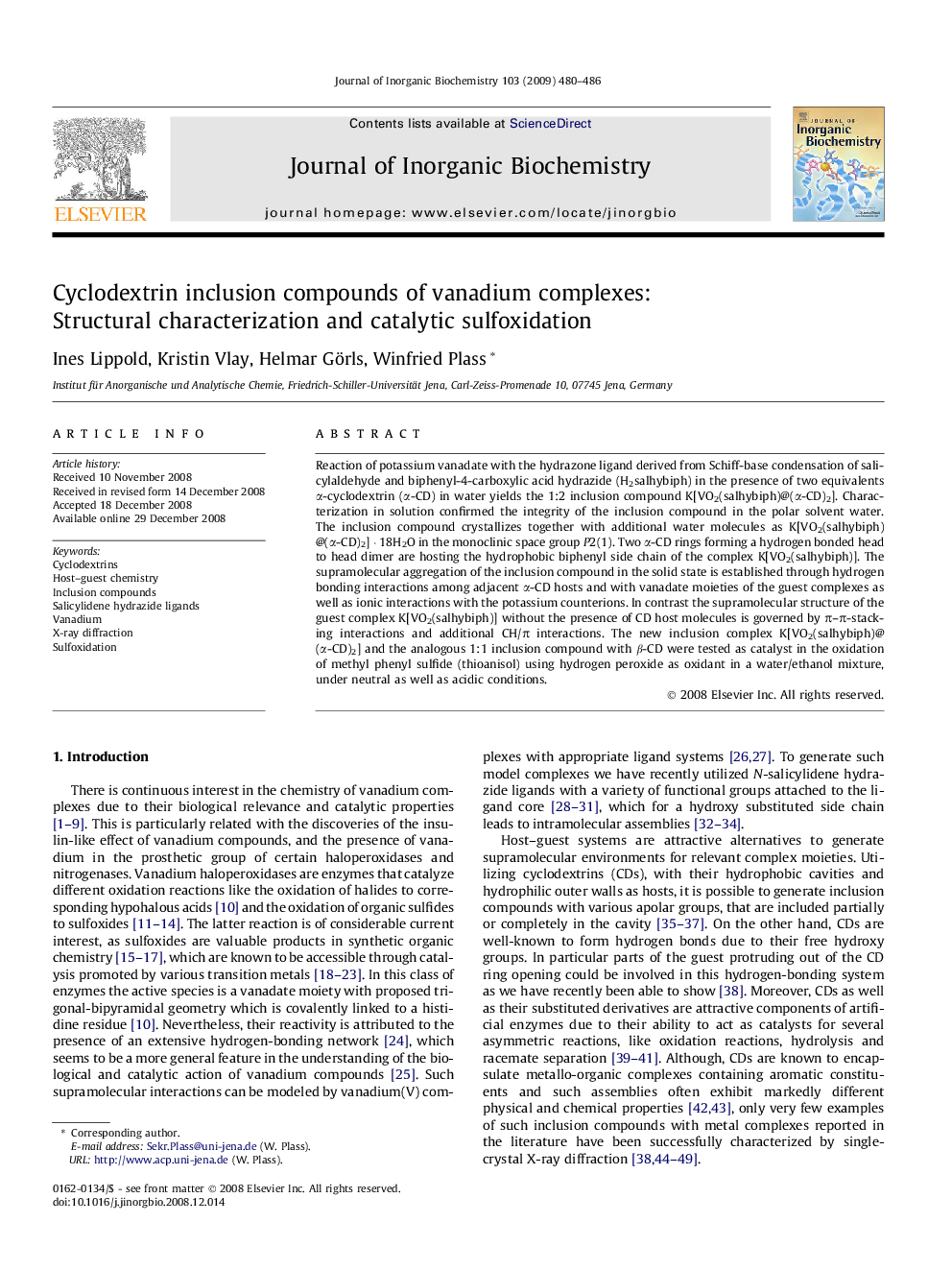| Article ID | Journal | Published Year | Pages | File Type |
|---|---|---|---|---|
| 1317416 | Journal of Inorganic Biochemistry | 2009 | 7 Pages |
Reaction of potassium vanadate with the hydrazone ligand derived from Schiff-base condensation of salicylaldehyde and biphenyl-4-carboxylic acid hydrazide (H2salhybiph) in the presence of two equivalents α-cyclodextrin (α-CD) in water yields the 1:2 inclusion compound K[VO2(salhybiph)@(α-CD)2]. Characterization in solution confirmed the integrity of the inclusion compound in the polar solvent water. The inclusion compound crystallizes together with additional water molecules as K[VO2(salhybiph)@(α-CD)2] · 18H2O in the monoclinic space group P2(1). Two α-CD rings forming a hydrogen bonded head to head dimer are hosting the hydrophobic biphenyl side chain of the complex K[VO2(salhybiph)]. The supramolecular aggregation of the inclusion compound in the solid state is established through hydrogen bonding interactions among adjacent α-CD hosts and with vanadate moieties of the guest complexes as well as ionic interactions with the potassium counterions. In contrast the supramolecular structure of the guest complex K[VO2(salhybiph)] without the presence of CD host molecules is governed by π–π-stacking interactions and additional CH/π interactions. The new inclusion complex K[VO2(salhybiph)@(α-CD)2] and the analogous 1:1 inclusion compound with β-CD were tested as catalyst in the oxidation of methyl phenyl sulfide (thioanisol) using hydrogen peroxide as oxidant in a water/ethanol mixture, under neutral as well as acidic conditions.
